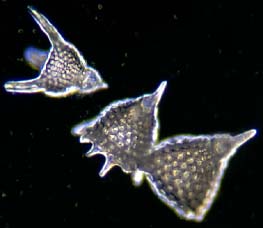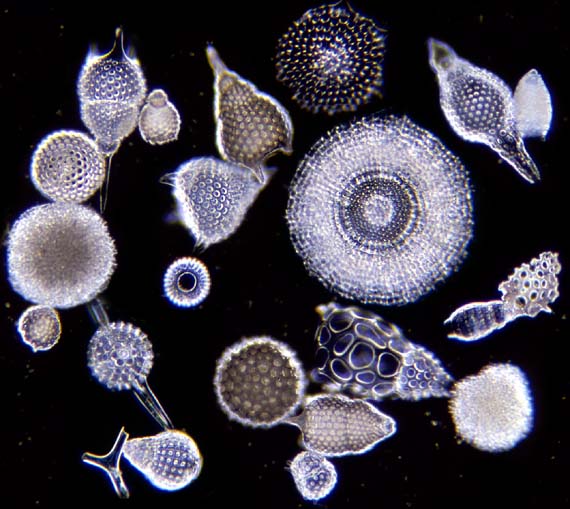RADIOLARIA
Spectacular objects for the microscope
Text and microscope slide
preparation
by Brian Darnton (UK)
Text/Images
by Wim van Egmond (NL)

The Radiolaria are a group of unicellular organisms perhaps more commonly met with as prepared slides, rather than in life. As living creatures they can be encountered in the great oceans but more commonly in the Central Pacific. They were discovered in strange and beautiful forms by the research ship Challenger as a huge deposit of ooze on the ocean bed.
Radiolaria are placed together with the sun animalcules (Heliozoa) in the phylum Actinopoda. What we call radiolaria are in fact two separate classes that are only remotely related: the Polycystina and the Phaeodaria. But because they are so well known as Radiolaria we will call them Radiolaria for convenience. Like the freshwater Heliozoa they have so called axopods projecting from their cell. They use these to capture prey. But the most striking feature of the Radiolaria is the beautiful glass like skeleton.
